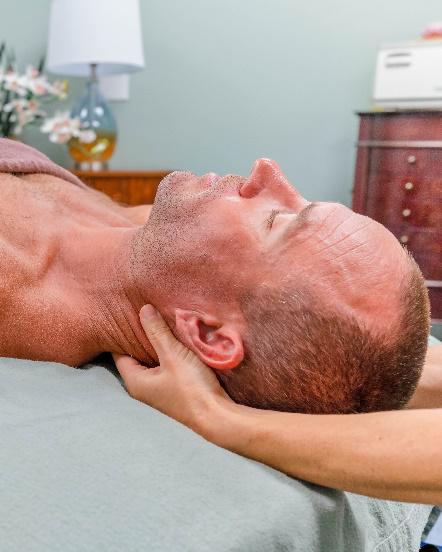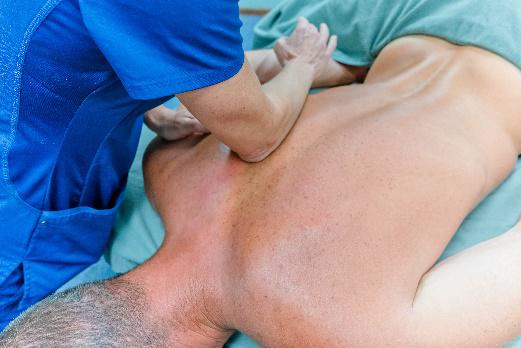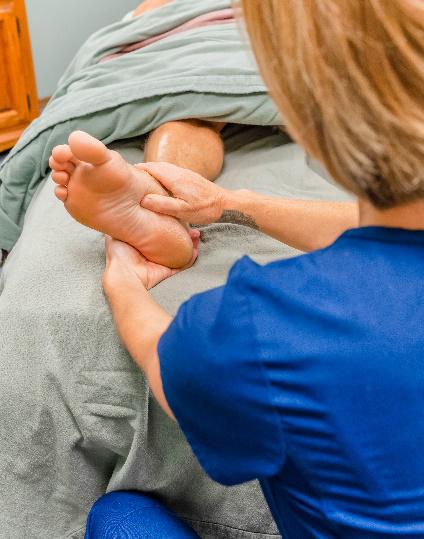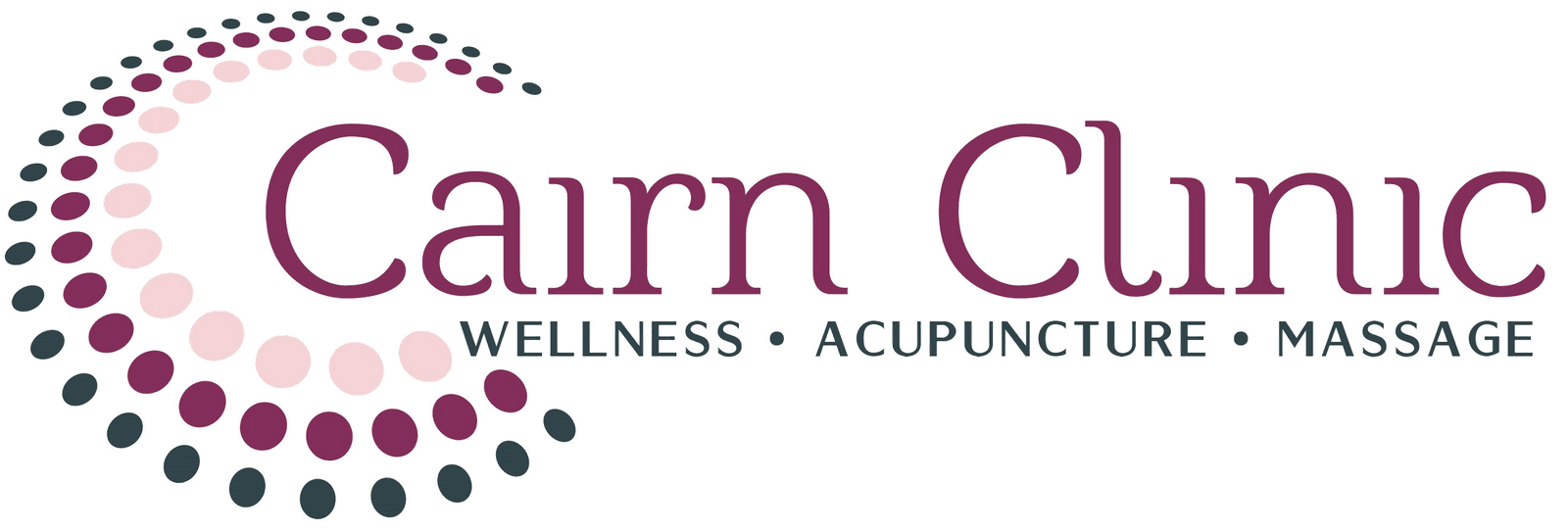Bradenton, Florida Office/Fax: 941-242-0022 | Cell: 727-422-7289
Bradenton, Florida Office/Fax: 941-242-0022 | Cell: 727-422-7289
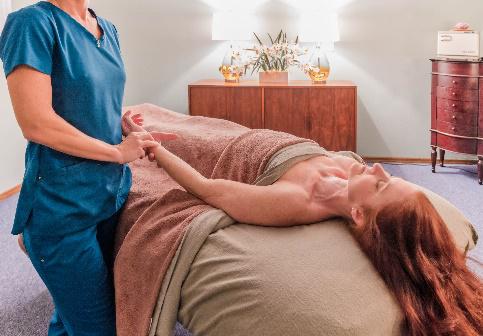
What is Medical Massage?
Massage Therapy is the oldest form of
healing.
At Cairn Clinic, massage
is the foundation of all our treatment modalities. The physical and
emotional blockages we experience in life can be explained through
the adhesions within the fascial web of connective tissue which
permeates every system in our bodies. The fascial web absorbs &
transmits electrochemical information to every cell in our bodies.
The memory of the fascial matrix is a complex network of experience
and expression. As we go through life our connective tissue supports
our every move, both physical & emotional. Over time, different
stressors effect the integrity of this intricate framework; as a
protective mechanism the fascial web establishes adhesions which
restrict nerve conduction, blood & lymphatic circulation, muscle
strength & flexibility, and overall energy metabolism. Medical
Myofascial Massage is designed to address restrictions, improving
structure and function on both a physical & emotional level.
New Patient Visit: $155
What Conditions are Treated with
Massage Therapy & Bodywork?
Pain Management & Rehabilitation
for conditions, such as:
Types of Massage Therapy and Bodywork Techniques available:
**Click on Technique to expand
Neuromuscular Therapy (NMT) is a specialized form of manual therapy that aims to address trigger points, muscle imbalance, nerve compression, and other neuromuscular dysfunctions. It involves a comprehensive assessment of the client's posture, movement patterns, and muscular imbalances to identify areas of tension, pain, or dysfunction. The technique focuses on the relationship between the nervous system and the muscular system, aiming to restore balance and function.
Here's a breakdown of the typical process and techniques involved:
Assessment:
A thorough
assessment of the client's history, posture, gait, and movement
patterns is conducted to identify areas of concern. Palpation may
also be used to locate tender or tight muscles and trigger points.
Trigger Point Release:
Trigger
points are hyperirritable spots within a muscle that can cause pain,
referred pain, and restricted movement. NMT involves applying
sustained pressure or ischemic compression to these trigger points to
release tension and promote relaxation.
Myofascial Release:
Fascia is a
connective tissue that surrounds muscles, bones, and organs.
Dysfunction or tightness in the fascia can contribute to pain and
restricted movement. Myofascial release techniques, such as
stretching or soft tissue manipulation, are used to release tension
in the fascia and restore mobility.
Muscle Energy Techniques (MET):
MET involves active and passive stretching techniques combined with
muscle contractions to restore range of motion and correct muscle
imbalances. This technique utilizes the body's own muscular efforts
to release tension and improve flexibility.
Postural Correction:
Poor
posture can contribute to muscular imbalances and pain. NMT includes
specific exercises and stretches to correct posture and improve
alignment, reducing strain on muscles and joints.
Education and Self-Care:
Clients
are educated about their condition, contributing factors, and
strategies for self-care. This may include exercises, ergonomic
modifications, and lifestyle adjustments to prevent recurrence of
symptoms.
Progressive Treatment Plan:
NMT
typically involves a series of sessions tailored to the individual
needs of the client. As progress is made, the treatment plan may be
adjusted to address evolving needs and goals.
Overall, Neuromuscular Therapy aims to
restore balance and function to the neuromuscular system by
addressing muscular imbalances, trigger points, and postural issues.
It is often used to alleviate chronic pain, improve mobility, and
enhance overall well-being
By combining
Neuromuscular Therapy with Corrective Exercises, individuals can
benefit from a comprehensive approach to musculoskeletal health. NMT
helps address immediate pain and tension issues, while Corrective
Exercises focus on long-term improvement, ensuring that the body
functions optimally and reducing the risk of future injuries. 50min:
$105, 80min: $155
TuiNa, often spelled as Tuina or Tuina, is a form of Chinese medical massage that has been practiced for centuries. It is based on the principles of Traditional Chinese Medicine (TCM) and involves the manipulation of the body's soft tissues, including muscles, tendons, ligaments, and acupressure points, to promote healing and balance within the body.
History and Philosophy:
TuiNa has its roots in ancient China
and is an integral part of Traditional Chinese Medicine. It is based
on the belief that imbalances or disruptions in the flow of Qi (vital
energy) through the meridians of the body can lead to pain, illness,
or dysfunction. By applying specific massage techniques, TuiNa aims
to restore the harmonious flow of Qi and promote overall health and
well-being.
TuiNa employs a variety of techniques,
including:
Acupressure:
Pressure is applied
to specific acupuncture points along the body's meridians to
stimulate the flow of Qi and promote healing.
Massage:
Various massage
techniques, such as kneading, rolling, pressing, and rubbing, are
used to manipulate the soft tissues of the body, including muscles,
tendons, and ligaments. These techniques help to release tension,
improve circulation, and alleviate pain.
Manipulation
: Joint manipulation
techniques may be used to improve mobility and alignment, as well as
to address musculoskeletal issues such as joint stiffness or
misalignment.
Stretching:
Gentle stretching
movements may be incorporated to improve flexibility and range of
motion in the muscles and joints.
Cupping:
In some cases, cupping
therapy may be used alongside TuiNa massage to promote blood flow,
relieve muscle tension, and reduce pain.
Indications
: TuiNa can be used
to treat a wide range of acute and chronic conditions, including
musculoskeletal disorders, sports injuries, neurological disorders,
digestive issues, respiratory conditions, and stress-related
disorders. It is often used as both a standalone therapy and as a
complementary treatment alongside acupuncture, herbal medicine, and
other modalities of Traditional Chinese Medicine.
The benefits of TuiNa massage may
include:
Treatment Process: A typical
TuiNa session begins with an assessment of the client's health
history, symptoms, and concerns. The therapist then selects
appropriate techniques based on the individual's needs and
preferences. The massage is usually performed with the client lying
on a massage table, although seated or clothed options are also
available. Sessions typically last between 30 minutes to an hour,
depending on the client's needs and the severity of their condition.
Overall, TuiNa medical massage offers a
holistic approach to health and wellness, addressing both physical
and energetic imbalances within the body. It is known for its
effectiveness in treating a wide range of health conditions and
promoting overall vitality and well-being
It's important to note that Tuina should be performed by a trained and qualified practitioner who understands the principles of Traditional Chinese Medicine and can tailor the treatment to an individual's specific needs. 50min: $105, 80min: $155
Reflexology is a
holistic therapy that focuses on the theory that specific points on
the feet, hands, and sometimes the ears, correspond to specific
organs, glands, and other parts of the body. By applying pressure and
massage techniques to these reflex points, reflexologists aim to
promote relaxation, balance the body's energy, and support overall
well-being.
Key aspects and
benefits of reflexology:
25min: $55, 50min: $105, 80min: $155
Hot Stone Massage is a popular and therapeutic form of massage therapy that involves
the use of smooth, heated stones to enhance relaxation, alleviate
muscle tension, and promote overall well-being. This technique
combines the benefits of massage with the soothing effects of heat
and can be deeply relaxing.
Benefits of Hot
Stone Therapy:
Hot Stone
Therapy is generally well-received by those seeking
relaxation and relief from muscle tension. It is commonly offered at
spas, wellness centers, and massage therapy clinics. If you are
considering hot stone therapy, be sure to choose a qualified
therapist with experience in this technique to ensure a safe and
enjoyable experience.
80min: $155
Hot Stone Massage is a popular and therapeutic form of massage therapy that involves
the use of smooth, heated stones to enhance relaxation, alleviate
muscle tension, and promote overall well-being. This technique
combines the benefits of massage with the soothing effects of heat
and can be deeply relaxing.
Key aspects
and benefits of Bamboo Fusion Massage:
80min: $155
Key Features and Benefits of Swedish Massage:
Swedish Massage is often chosen for its relaxing and stress-reducing
benefits. It can also help alleviate muscle tension and soreness,
improve circulation, and promote a general sense of well-being. While
it is primarily associated with relaxation, Swedish massage can be
adapted to provide deeper pressure if the client prefers a more
therapeutic or pain-relief-focused experience.
50min: $105,
80min: $155
